Tata Harrier EV Launched At Rs 21.49 Lakh; Gets Dual Motor Powertrain, Terrain Modes & More

- Harrier EV gets option of dual-motor all-wheel drive on top variants
- Will be offered in three variants - Adventure, Fearless and Empowered
- Bookings open July 2, 2025
Tata Motors has launched the much-anticipated Harrier EV in India with prices starting from Rs 21.49 lakh (ex-showroom). The price of a charger is not included. Bookings open from July 2. The Harrier EV will be offered across three variants - Adventure, Fearless and Empowered, with top trims getting the option of a dual-motor all-wheel drive system dubbed Quad Wheel Drive (QWD) by Tata – a first for an EV from an Indian carmaker.

In terms of design, the overall look has not changed much compared to the internal combustion Harrier with key differences coming down to the EV-unique enclosed grille design, reprofiled central air dam on the bumper and EV-specific alloy wheel designs. The cabin, too, does not stray far from the ICE SUV with familiar bits such as the touch-sensitive climate controls and a 10.25-inch digital instrument cluster, though there is one notable upgrade. The ICE Harrier’s 12.3-inch touchscreen is replaced by a larger 14.53-inch Neo QLED display – which Tata says is a first in the automotive space.

In terms of features, the Harrier EV carries over a lot of the tech from the ICE Harrier such as the panoramic sunroof, multi-zone climate control and level 2 ADAS tech, but there are also a lot of new features to talk about. The QWD variants get 6 Terrain Modes aside from 4 Drive modes. The six modes include Rock Crawl, Snow, Gravel, Sand and Normal, with the sixth mode being customizable by the driver.
The 360-degree cameras also offer a transparent mode to let users see the terrain under the vehicle. The front and rear cameras also double as built-in dash-cams in conjunction with a digital rearview mirror with up to 129 GB of internal storage. Also unique to the QWD is an off-road assist mode or off-road cruise control, allowing users to set a low speed for the vehicle to maintain when going off the beaten path.

Moving to the comfort-oriented features, the co-driver seat is also powered in top variants, while the audio system is upgraded with new JBL Black speakers with Dolby Atmos. The Harrier EV also gets an autonomous parking function, allowing for autonomous parking while not being seated in the vehicle. The system also features a summon mode, allowing users to summon the vehicle out of the parking spot at the touch of a button. The Harrier EV also debuts a new DrivePay app as part of its iRA connected car feature suite, allowing users to make UPI payments via the central touchscreen.

The Harrier EV also supports Vehicle-to-Vehicle and Vehicle-to-Load functions. The former can be used at a peak rate of 5 kW while the latter offers a peak 3 kW output.

Coming to the powertrain, unlike its front-wheel-drive ICE counterpart, the Harrier EV gets rear-wheel drive as standard, featuring a 235 bhp electric motor paired with a 65 kWh or 75 kWh battery. The QWD variants add a second 156 bhp electric motor to the front axle, taking combined output to 391 bhp and 504 Nm of peak torque. On the suspension front, the Harrier EV gets an all-independent suspension setup with frequency-selective dampers. Stopping power comes from disc brakes at all four corners. Tata claims that the Harrier EV QWD will hit 100 kmph from a standstill in 6.3 seconds.

Coming to the range, Tata says that the 75 kWh battery in rear-wheel drive configuration has an ARAI-certified range of up to 627 km. In terms of real-world use (C75), Tata says that this translates to a range of between 480 and 505 km on a full charge. As for the charging, Tata says that the Harrier EV will support up to 7 kW AC and 120 kW DC fast charging, enabling user to charge from 20 to 80 per cent in just under 25 mins.
In terms of the competition, the Harrier EV will go up against the likes of the Mahindra XEV 9e and the BYD Atto 3.
Trending News
Latest News
 car&bike Team | Dec 5, 2025Trump Eyes Production Of Smaller, More Fuel-Efficient Cars In USTrump broached the topic of opening the doors for production of smaller, more fuel-efficient cars – similar to those sold in Japan and South Korea - while announcing a backtrack of CAFE norms set under the Biden administration.2 mins read
car&bike Team | Dec 5, 2025Trump Eyes Production Of Smaller, More Fuel-Efficient Cars In USTrump broached the topic of opening the doors for production of smaller, more fuel-efficient cars – similar to those sold in Japan and South Korea - while announcing a backtrack of CAFE norms set under the Biden administration.2 mins read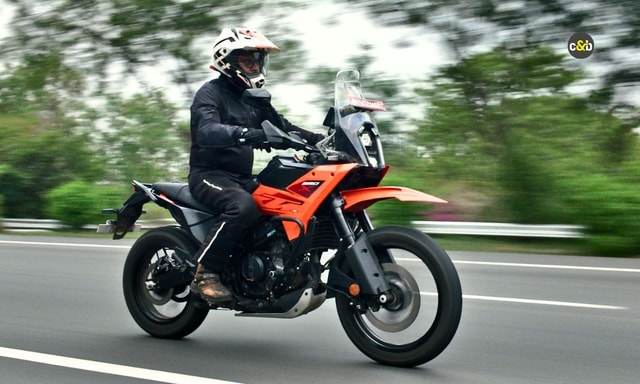 Preetam Bora | Dec 5, 2025KTM 390 Adventure, 390 Duke, 390 Enduro Recalled Over Engine Stall RiskThe recall for KTM 390 models has been announced to address an engine stall issue, and the engine control unit (ECU) will be updated free of charge in all affected motorcycles.2 mins read
Preetam Bora | Dec 5, 2025KTM 390 Adventure, 390 Duke, 390 Enduro Recalled Over Engine Stall RiskThe recall for KTM 390 models has been announced to address an engine stall issue, and the engine control unit (ECU) will be updated free of charge in all affected motorcycles.2 mins read Jaiveer Mehra | Dec 5, 2025Lexus LFA Revived As Electric Sports Car ConceptThe new LFA concept previews an all-electric super sports car based on the new Toyota GR GT.1 min read
Jaiveer Mehra | Dec 5, 2025Lexus LFA Revived As Electric Sports Car ConceptThe new LFA concept previews an all-electric super sports car based on the new Toyota GR GT.1 min read Carandbike Team | Dec 5, 2025Bajaj Pulsar N160 Variant With Gold USD Fork, Single Seat IntroducedThe new variant of the Pulsar N160 is priced at Rs. 1.24 lakh and aimed at offering more comfort and practicality with the single-piece seat.2 mins read
Carandbike Team | Dec 5, 2025Bajaj Pulsar N160 Variant With Gold USD Fork, Single Seat IntroducedThe new variant of the Pulsar N160 is priced at Rs. 1.24 lakh and aimed at offering more comfort and practicality with the single-piece seat.2 mins read car&bike Team | Dec 4, 2025Tata Harrier EV Fords Beas River In Red Bull Extreme StuntRed Bull is putting the Tata Harrier EV through some extreme stunts as part of a recent collaboration with Tata Motors.1 min read
car&bike Team | Dec 4, 2025Tata Harrier EV Fords Beas River In Red Bull Extreme StuntRed Bull is putting the Tata Harrier EV through some extreme stunts as part of a recent collaboration with Tata Motors.1 min read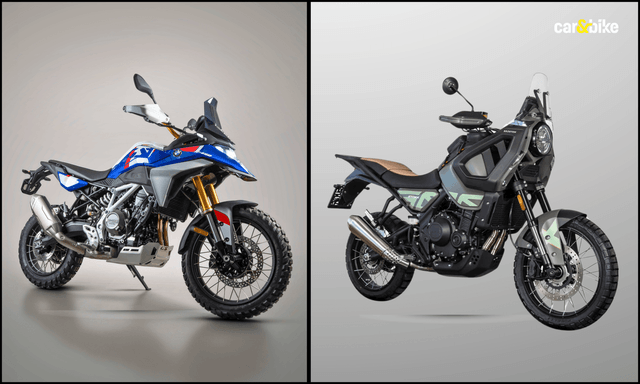 Jafar Rizvi | Dec 4, 2025BMW F 450 GS, Brixton Storr 500 Will Not Debut At India Bike Week 2025Soon after IBW confirmed its venue and dates -- following weeks of uncertainty -- two major participants pulled out of showcasing their new models at the event.2 mins read
Jafar Rizvi | Dec 4, 2025BMW F 450 GS, Brixton Storr 500 Will Not Debut At India Bike Week 2025Soon after IBW confirmed its venue and dates -- following weeks of uncertainty -- two major participants pulled out of showcasing their new models at the event.2 mins read
 Girish Karkera | Dec 4, 20252026 Honda Prelude First Drive: Domesticated Civic Type RA sporty-looking coupe built to give customers a taste of performance but not at the expense of everyday practicality.5 mins read
Girish Karkera | Dec 4, 20252026 Honda Prelude First Drive: Domesticated Civic Type RA sporty-looking coupe built to give customers a taste of performance but not at the expense of everyday practicality.5 mins read Seshan Vijayraghvan | Nov 29, 2025Mahindra XEV 9S First Drive Review: Big Electric SUV, Bigger ExpectationsThe XEV 9S lands at a time when the EV crowd is growing fast. It’s a big, born-electric, three-row SUV that starts under 20 lakh. It sits close to the XUV700 in size, but the brief is very different. Here’s what it’s like on the road.11 mins read
Seshan Vijayraghvan | Nov 29, 2025Mahindra XEV 9S First Drive Review: Big Electric SUV, Bigger ExpectationsThe XEV 9S lands at a time when the EV crowd is growing fast. It’s a big, born-electric, three-row SUV that starts under 20 lakh. It sits close to the XUV700 in size, but the brief is very different. Here’s what it’s like on the road.11 mins read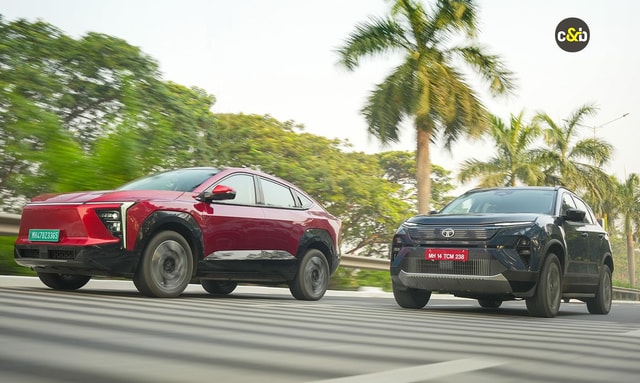 Bilal Firfiray | Nov 26, 2025Tata Harrier EV vs Mahindra XEV 9e: Battle Of India’s Electric TitansWhen India made two electric SUVs battle it out, the winner is the buyer. They get a choice to take home what’s best suited for them – and read on to find out which one is better for YOU.1 min read
Bilal Firfiray | Nov 26, 2025Tata Harrier EV vs Mahindra XEV 9e: Battle Of India’s Electric TitansWhen India made two electric SUVs battle it out, the winner is the buyer. They get a choice to take home what’s best suited for them – and read on to find out which one is better for YOU.1 min read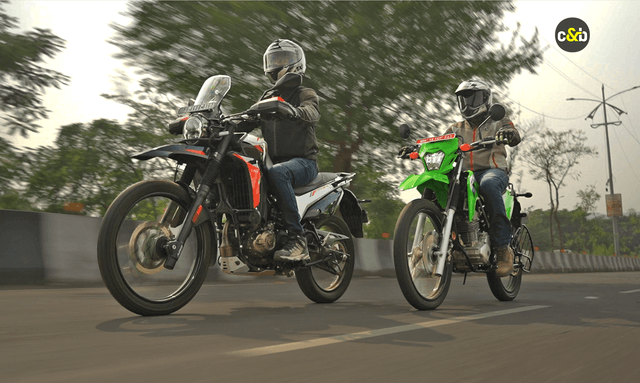 Janak Sorap | Nov 19, 2025Hero Xpulse 210 Vs Kawasaki KLX 230 Comparison Review: Dual-Sport DilemmaWith a price difference of just Rs 12,000, which of the two dual-sport motorcycles is meant for you?1 min read
Janak Sorap | Nov 19, 2025Hero Xpulse 210 Vs Kawasaki KLX 230 Comparison Review: Dual-Sport DilemmaWith a price difference of just Rs 12,000, which of the two dual-sport motorcycles is meant for you?1 min read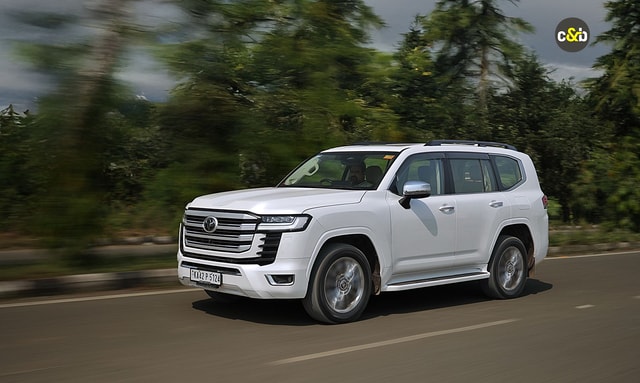 Jaiveer Mehra | Nov 17, 20252025 Toyota Land Cruiser 300 Review: Beast From The EastThe Land Cruiser name may have a long and storied history, but does it fit the bill for an Rs 2 crore-plus SUV in India?13 mins read
Jaiveer Mehra | Nov 17, 20252025 Toyota Land Cruiser 300 Review: Beast From The EastThe Land Cruiser name may have a long and storied history, but does it fit the bill for an Rs 2 crore-plus SUV in India?13 mins read














































































































































